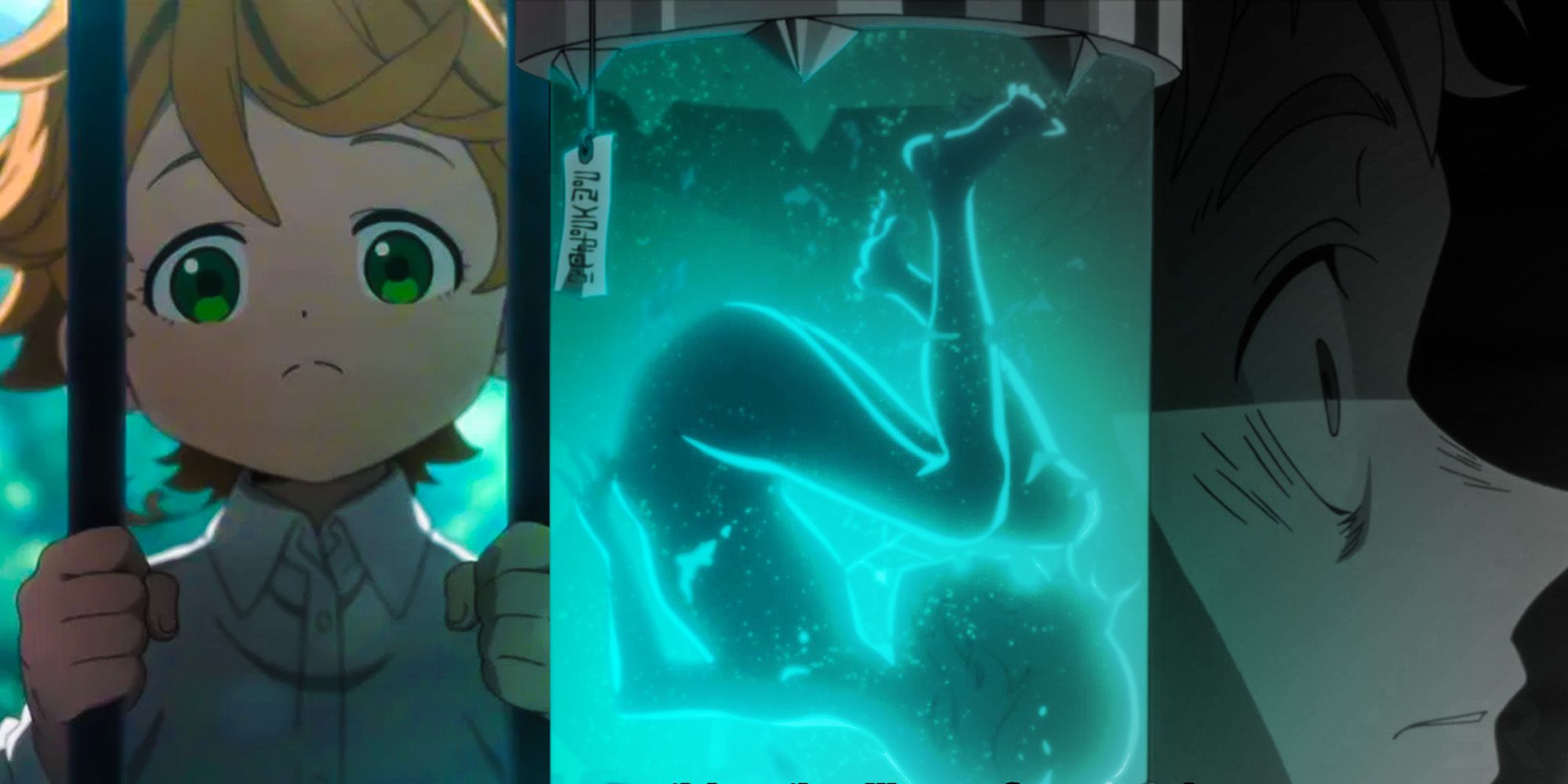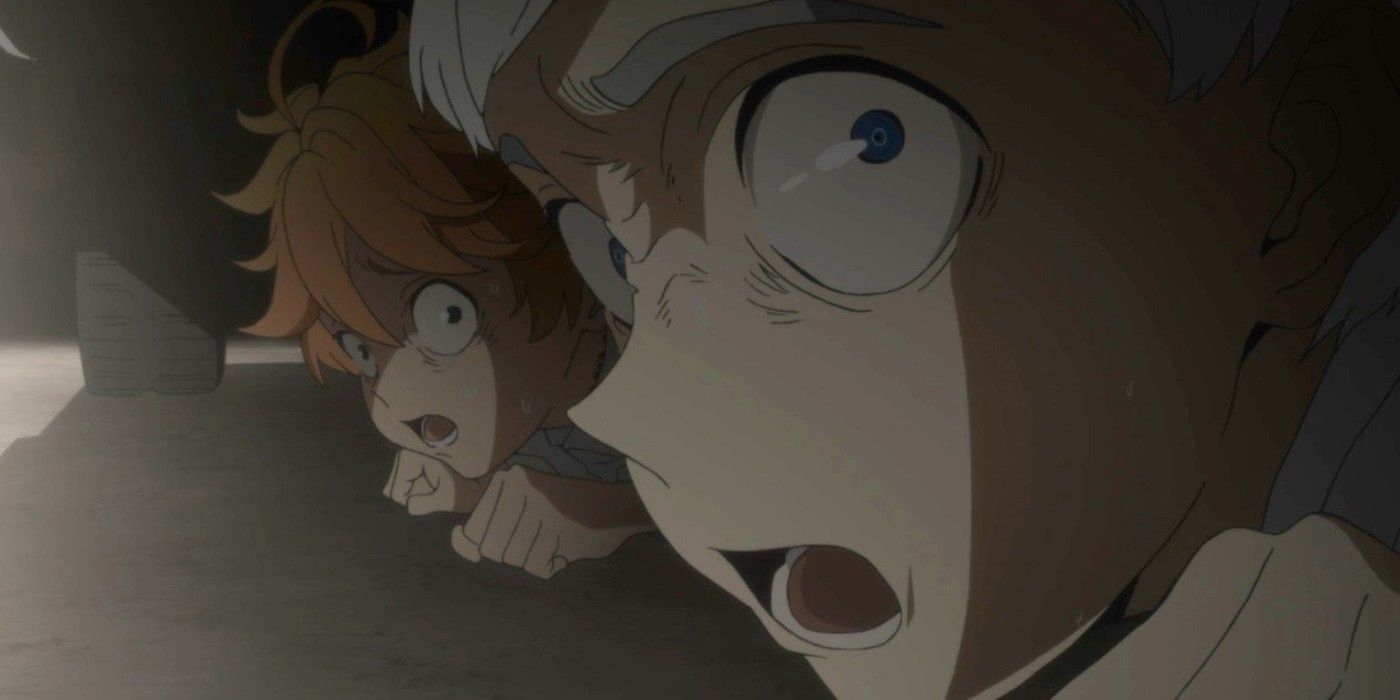
Here's what The Promised Neverland's opening episode twist means, and why it's such an iconic beginning for the anime series. Generally speaking, the first episode of any anime comes out of the gate hot, whether it's Naruto fighting Mizuki or Saitama defeating numerous villains with a single blow. Set in an idyllic orphanage, The Promised Neverland takes a different approach. The opening introduces Emma, her close friends Norman and Ray, and the various other children at Grace Field. The trio live in a huge country house in lush green grounds, and are looked after by a mother who cares for them deeply. Much of the premiere is little more than children playing, laughing and being a family.
Then Emma discovers an orphan's corpse in the back of a van. As with any home like Grace Field, children will occasionally be taken away for adoption, and it's Conny's turn to leave when The Promised Neverland season 1 begins. The children know they should never approach the gate where the adopted depart, but Emma and Norman can't resist after Conny leaves her favorite toy behind. While they expect a scolding, the pair actually find Conny's corpse with a flower poking out of the chest. Two grotesque demons then approach and discuss the taste of human flesh, revealing the true nature of Grace Field.
As can be inferred by the demons' conversation, Grace Field is one of many farms that breed and raise human children for consumption. The "normal" ones like Conny are harvested at the age of 6, whereas the super-intelligent youngsters such as Emma, Norman and Ray are allowed to develop until they're ripe. As the demons also imply, there's a class divide in their society. Intellectual children are considered premium-quality meat, and only the richest demons can afford to eat Grace Fields' produce, if that's any consolation to poor Conny. The home's mother, Isabella, is complicit in the operation, but evidently not in charge, taking her orders from demons. The "gupna" mentioned during this shocking scene relates to the flower in Conny's chest - an ancient demonic ritual that drains the victim of their blood before they're ready to eat.

The international popularity of The Promised Neverland is in no small part thanks to this game-changing twist and the slow, unsuspecting build of the premiere. Simply titled "121045," The Promised Neverland's first episode follows anime convention by introducing the central characters, setting the scene, and situating the viewer comfortably in Emma's fictional world. After creating a false sense of security, the series subverts expectation with an intentionally jarring switch of tone. The Promised Neverland is no wholesome tale of orphans looking out for each other after all (not completely anyway) - it's a dystopian horror where children are treated like cattle.
The shift is made all the more effective by The Promised Neverland's disturbing art. Not only is Conny's corpse horrifically distorted, but the first appearance of the demons is far more affecting than it would've been in a regular horror anime because it comes so unexpectedly. Even the final scene where Isabella finds Conny's toy and realizes she was followed is intended to horrify when Mama's skeletal expression cuts into frame suddenly.
The technique is similar to Attack on Titan - another modern anime success story. The premiere mostly follows Eren, Misaka and Armin on their daily chores, but ends with the appearance of the huge Colossal Titan, triggering a brutal wave of uncompromising death and destruction. The Promised Neverland, however, goes even further. While Attack on Titan at least explained the existence of the monsters beforehand, The Promised Neverland gives no indication of a demonic presence until Emma and Norman see the creatures for themselves. Had The Promised Neverland not delivered such a stunning twist, spelling out its true intentions from the start instead, the story may have never gained such popularity.
from ScreenRant - Feed https://ift.tt/3eiQp5d






0 Comments
Please don't use vulgar comments and avoid discussion on Religious matters